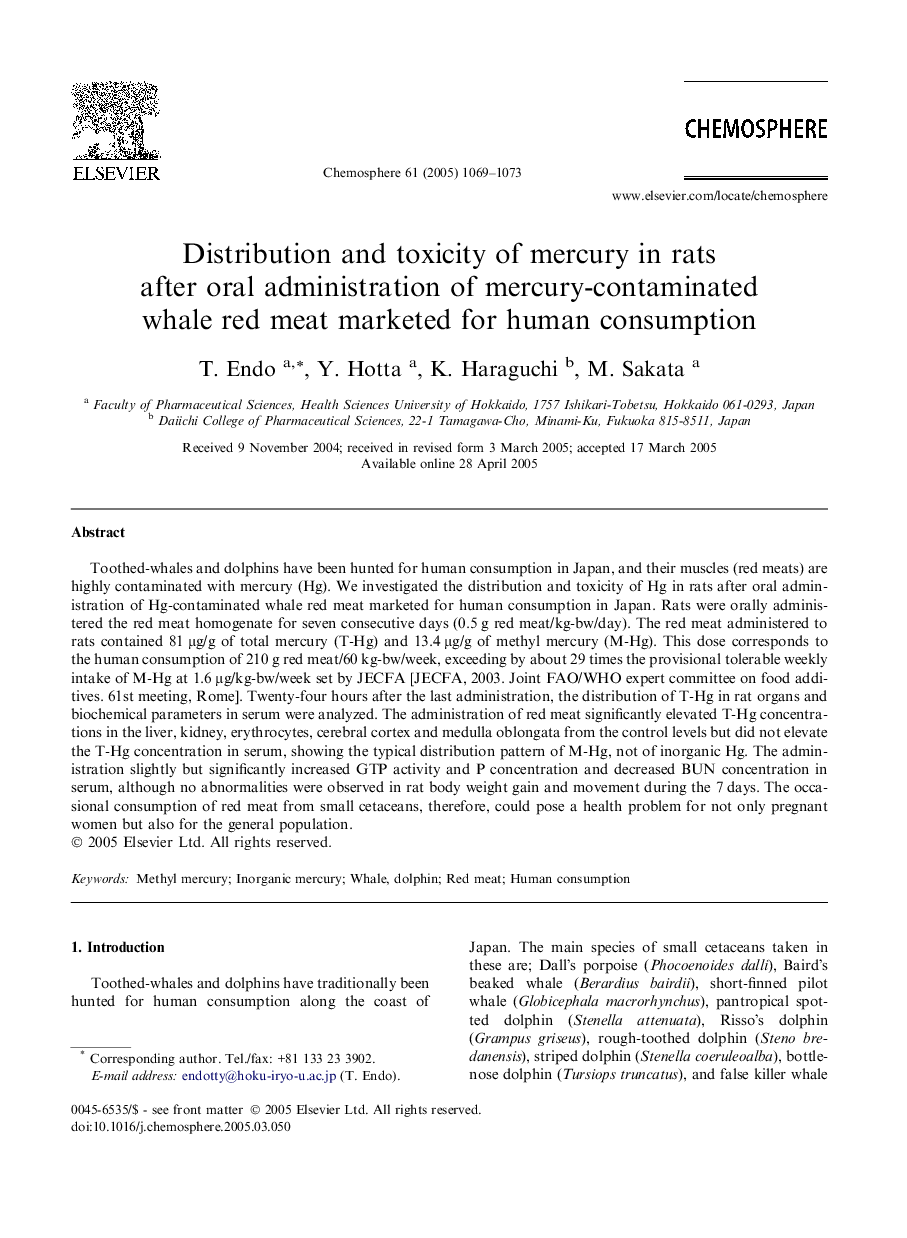| Article ID | Journal | Published Year | Pages | File Type |
|---|---|---|---|---|
| 9451391 | Chemosphere | 2005 | 5 Pages |
Abstract
Toothed-whales and dolphins have been hunted for human consumption in Japan, and their muscles (red meats) are highly contaminated with mercury (Hg). We investigated the distribution and toxicity of Hg in rats after oral administration of Hg-contaminated whale red meat marketed for human consumption in Japan. Rats were orally administered the red meat homogenate for seven consecutive days (0.5 g red meat/kg-bw/day). The red meat administered to rats contained 81 μg/g of total mercury (T-Hg) and 13.4 μg/g of methyl mercury (M-Hg). This dose corresponds to the human consumption of 210 g red meat/60 kg-bw/week, exceeding by about 29 times the provisional tolerable weekly intake of M-Hg at 1.6 μg/kg-bw/week set by JECFA [JECFA, 2003. Joint FAO/WHO expert committee on food additives. 61st meeting, Rome]. Twenty-four hours after the last administration, the distribution of T-Hg in rat organs and biochemical parameters in serum were analyzed. The administration of red meat significantly elevated T-Hg concentrations in the liver, kidney, erythrocytes, cerebral cortex and medulla oblongata from the control levels but did not elevate the T-Hg concentration in serum, showing the typical distribution pattern of M-Hg, not of inorganic Hg. The administration slightly but significantly increased GTP activity and P concentration and decreased BUN concentration in serum, although no abnormalities were observed in rat body weight gain and movement during the 7 days. The occasional consumption of red meat from small cetaceans, therefore, could pose a health problem for not only pregnant women but also for the general population.
Related Topics
Life Sciences
Environmental Science
Environmental Chemistry
Authors
T. Endo, Y. Hotta, K. Haraguchi, M. Sakata,
